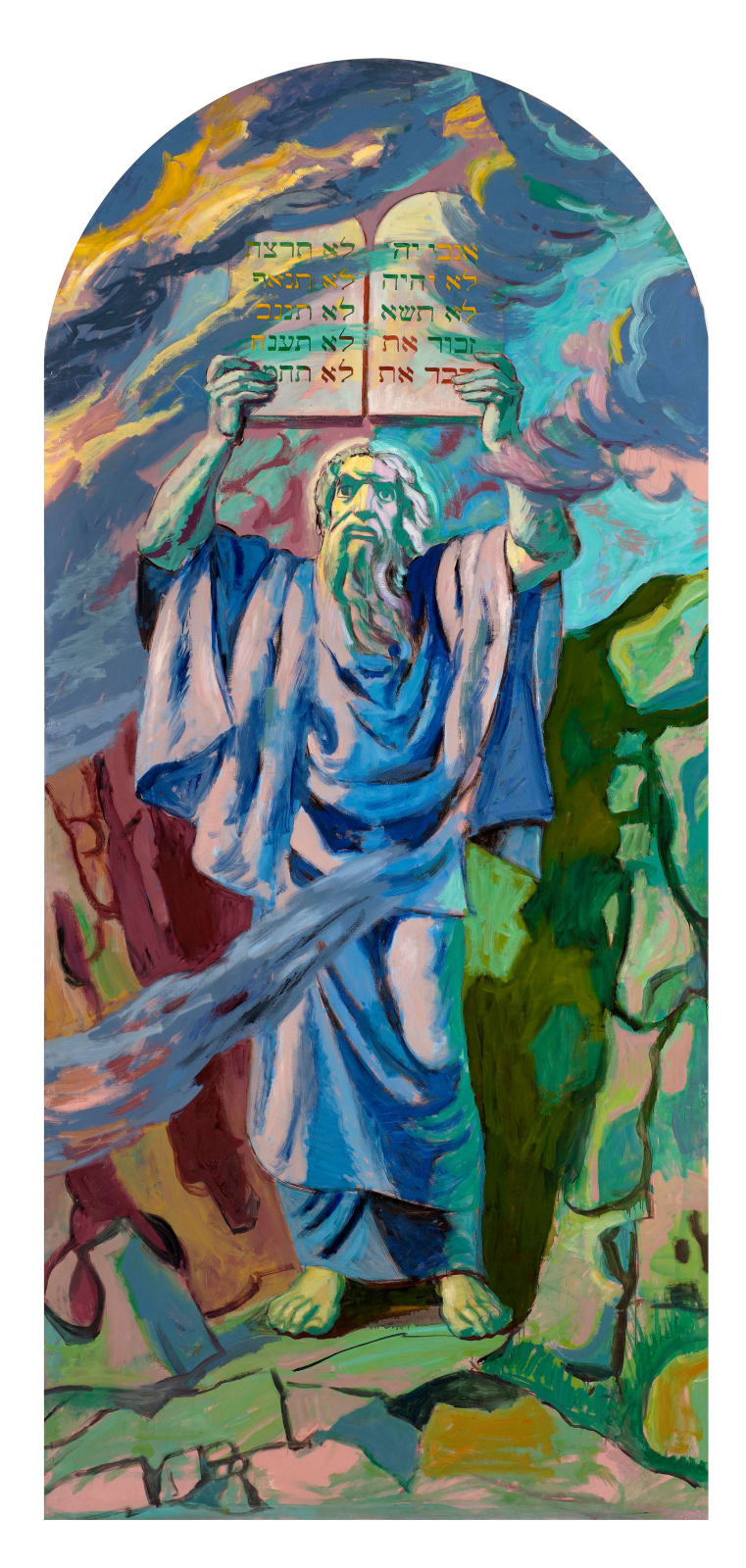Moses with the Tablets of the Law
Artist Hans Feibusch
Accession number 2013-f4
In ‘Moses with the Tablets of the Law’, part of Hans Feibusch’s mural series for West London Synagogue, an intent and intense Moses raises high the Tablets of the Law for all to see and understand. The giving of the Tablets of the Law – essentially instructions for a migrant people, designed to enable survival on their journey – was a revelatory and foundational moment in the Exodus.
Migration requires a different way of life and culture from that required in settled communities. Lengthy experiences of travel whilst undergoing hardship require particular activities and attitudes in order to enable survival, including issues of assimilation versus separation. Experiences on the edge or margins of society open some to revelatory experiences and new insights, as is depicted here in Moses with the Tablets of the Law. Not only so, but the insights and experience of refugees can also be revelatory for those in settled communities too.
Sam Wells, Vicar of St Martin-in-the-Fields has described how this happened for the St Martin’s congregation when members of the 45-strong asylum-seekers group that meets at St Martin’s every Sunday afternoon acted in their annual Passion Play: “The British public sees asylum-seekers as a threat or at best an administrative burden. The churches tend to see them as objects of pity and mercy. On Palm Sunday they were none of these things. They were prophets, preachers, provocative witnesses to the gospel, challenging us at St Martin’s, used to thinking of ourselves as edgy and politically engaged, with the question of where we each stood in the passion story … on Palm Sunday they were swept up into the passion narrative itself. And they changed the whole way we thought about the story we thought we knew.” (S. Wells ed., ‘Liturgy on the Edge’, Canterbury Press, 2018, p.101).
This scene from the biblical Book of Exodus depicts Moses with the Tablets of the Law on Mount Sinai, where he had led the people of Israel out of Egypt and they set up a camp in the foothills. As the community began to drift away from God, Moses was summoned to intercede in their name and after 40 days and 40 nights of fasting, God gave him the Tablets of Covenant with the Ten Commandments written by his own finger, defining the ten principles the Jewish people should adhere to. When Moses came down from the mountain to find the people worshipping the idol of the Golden Calf, Moses shattered the tablets and pleaded for God’s pardon. After God instructed him to chisel two new tablets which would once again be inscribed upon the mountain, these were later held in the Ark of the Covenant and could be only accessed by the highest priest on special occasions. This painting depicts Moses holding the two tablets aloft.
This work is one of a series of five large-scale paintings on canvas on Old Testament scenes commissioned by Rabbi Hugo Gryn for the Stern Hall in the West London Synagogue in 1973. In the accompanying gouache study for the painting (one of a set of six), Feibusch chose to depict the moment when Moses received the tablets, holding them in front of his chest with his tunic wrapped around his head to shield him from the wind.
In Feibusch’s Times obituary (21 July 1998), it was noted how his religious works exhibited 'brilliant colour and a composition which is generally suave and classical, often lyrical: he was a man who valued warmth and passions in religion, knew how to project joy and sorrow in his painting, sorrow for European conflict being for many decades a keenly felt emotion'.























